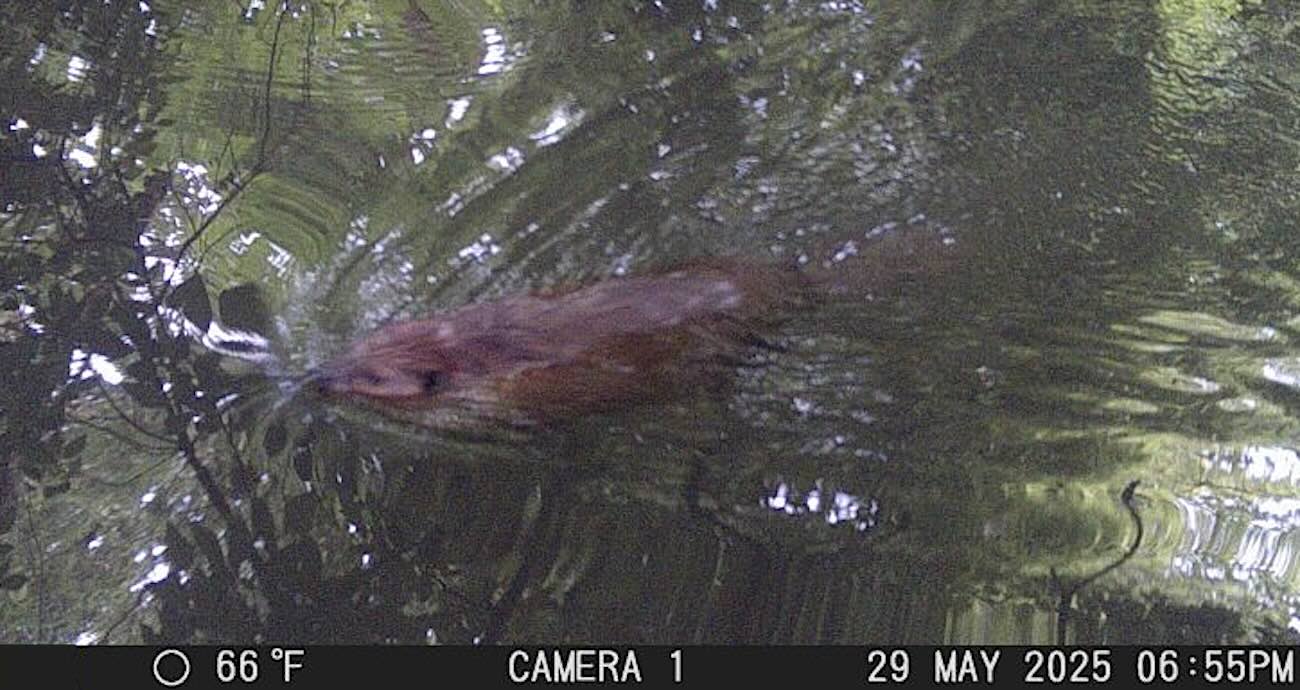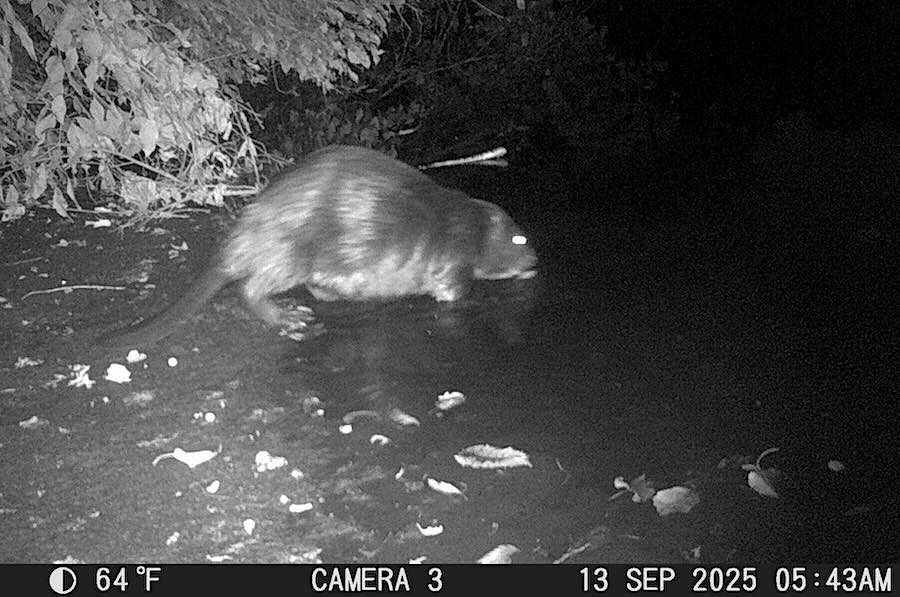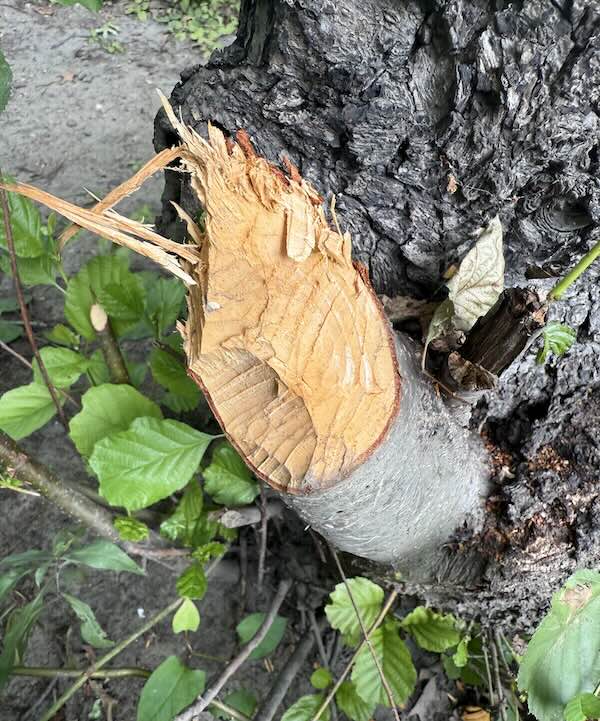
Beavers had not been seen in New York City for 200 years, after their coveted fur pelts became valuable and habitat was impacted by human activity.
But, finally, in 2007 one was spotted in the Bronx River. Then, a second beaver arrived—nicknamed Justin Beaver, who joined José, the original—and they lived together for a number of years on the river.
The last anyone saw them was 2018; they are believed to have passed away, leaving a keystone species missing from the ecosystem.
But four months ago, biology student and beaver activist RJ Hawkins was checking camera trap footage and reported her findings:
“Something surprising was spotted in the Bronx River that hasn’t been seen for a very long time: a beaver!”
In June of 2024, two camera traps were placed upstream and two others downstream of the Mitsubishi Walk section of the Bronx Zoo to try to see if any beavers had returned to the river.
While no beavers were spotted during the data collection near the Twin Dams, which continued through October, the data did present insight into how impactful dams can be in urban ecosystems.
Normally, beaver dams increase biodiversity in an ecosystem by creating pond/wetland habitats that weren’t there previously. This creates a diversity of habitat types that provides a space for many animal and plant species to thrive.
MORE GOOD NEWS FOR BEAVERS:
• First Beaver in 400 Years Born in English Countryside as Reintroduced Pair Gives Birth–and Spurs Return of Nature
• Beavers Saved From Euthanasia Transform and Replenish Rivers in the Utah Desert
During the 2024 monitoring period, many more species of animals were observed upstream of the dam than were observed downstream of the dam. This suggests that although there are many issues with urban dams (such as migratory fish and eel species not being able to travel upstream) they may be able to support biodiversity by creating the pond/wetland ecosystems downstream. (And, in places so heavily urbanized such as New York City this is an important discovery as it shows that these habitats need to be maintained as biodiversity hotspots.)
In April of this year, new camera traps were set up at the same places again in the hopes that any beavers might have found a new home.
“At the end of May, incredibly enough, a beaver was seen on the footage—this time swimming past the camera trap,” RJ wrote for the Bronx River Alliance.

“This was such an amazing discovery because not only does it show how much biodiversity this section of the river can support, but it also signals the return of a species that had been absent, suggesting significant ecological recovery in an urban environment.”
She hoped the sighting was just the beginning—and it was.
New evidence around the Bronx River this summer revealed activity of beavers building dams, with the iconic tooth marks left behind when trees and branches were carried off.
In September RJ’s camera trap caught more images of eager beavers on the riverbank.
WATCH! Teen Rescues Baby Beaver from River Rapids: ‘It was such a Canadian Experience’

In the last half century beaver populations have rebounded significantly across the US, with a decline in the fur trade and conservation efforts—and now they are even returning to our biggest cities.
NEW YORKERS NEED SOME GOOD NEWS – So Share This on Social Media…


Leave a Reply